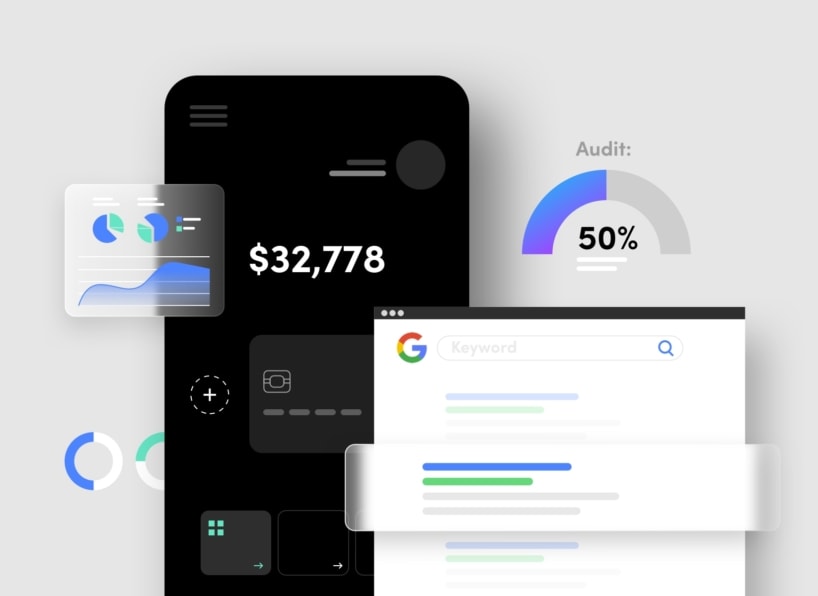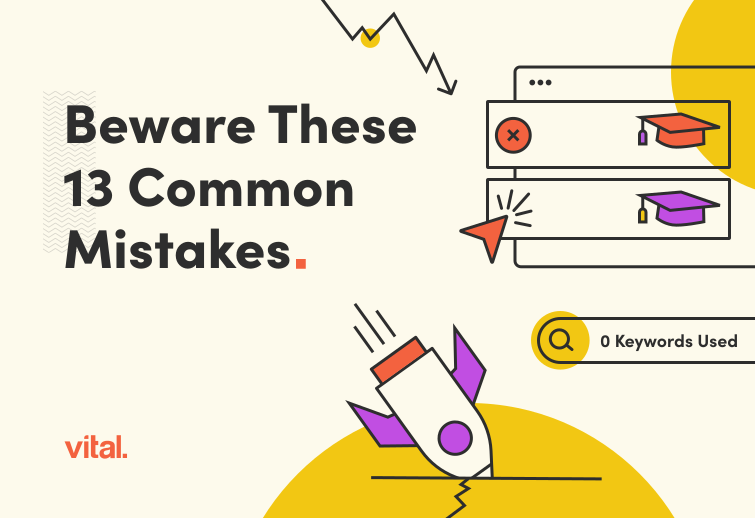Search Engine Optimization (SEO) is one of the pillars of a solid fintech digital marketing strategy. Showing up at the top of the Search Engine Results Page (SERP) for keywords your potential customers are using can have a huge positive impact on your business. Sounds great in theory — in reality, winning the fintech SEO game is not so simple.
The challenges of SEO for fintech include:
- Competition. You’re going up against big consulting firms, implementation partners, software companies, and industry publications that are already ranking for tons of fintech keywords.
- Expertise, Authority, and Trust (E-A-T). These are the quality indicators that Google uses to determine SEO rankings. If you’re not taking active steps to maximize both your site’s and your authors’ E-A-T scores, you’ll have a hard time outranking the big guys.
- Your Money or Your Life (YMYL). This is an even stricter set of quality requirements Google applies to certain types of content that could directly and significantly impact people’s health, finances, or the overall wellbeing of society. Fintech content usually falls under YMYL, which means you have to do more to make sure your content is helpful and truthful — in addition to meeting the highest E-A-T standards.
- Government regulations. The fintech industry is heavily regulated, so you need the expertise to ensure that your content adheres to the rules set forth by governmental entities.
Complicated? Yes. Impossible? Hardly.
This post introduces eight strategies your fintech digital marketing team can use to improve your rankings on the SERP, drive more traffic to your website, and boost your overall online visibility.
The 8 Strategies for Fintech SEO:
1. Build a strong foundation for SEO.
Whether you’ve already put work into SEO or you’re just starting out, now is the time to hit pause and ensure that your online presence has a solid foundation. For fintech SEO, a solid foundation includes:
- Your brand and its assets (visual identity, messaging, etc.)
- A scalable and flexible website
- Some amount of content that’s relevant to your brand and your audience
- Established digital channels for promoting content
- A suite of up-to-date digital marketing tools
While you’re getting your foundation in order, it’s also important to document your Key Performance Indicators (KPIs) to provide a baseline you’ll use to measure the success of your SEO strategy.
Learn how Vital helps fintech companies thrive through an unconventional, cross-disciplinary approach to brand development, website design and enhancements, and digital marketing.
2. Manage site rebuilds with care.
This applies mainly to fintech companies who acquire other brands through mergers and acquisitions, but it’s also relevant for any website overhaul. The truth is, website redesigns and M&As can be incredibly costly in terms of SEO. That’s because website teams tend to make one common mistake:
Eliminating pages and content without first auditing their SEO value.
Don’t let this happen to your website. Instead of getting rid of content that no longer seems relevant, or taking an entire site offline and redirecting the traffic to your website following a merger or acquisition, do this:
- Take stock of every single page on your site (or the site you’re acquiring).
- Use a tool like SEMrush to see which pages are ranking for what terms.
- Decide which pages to keep, kill, combine, or update in order to maintain your rankings.
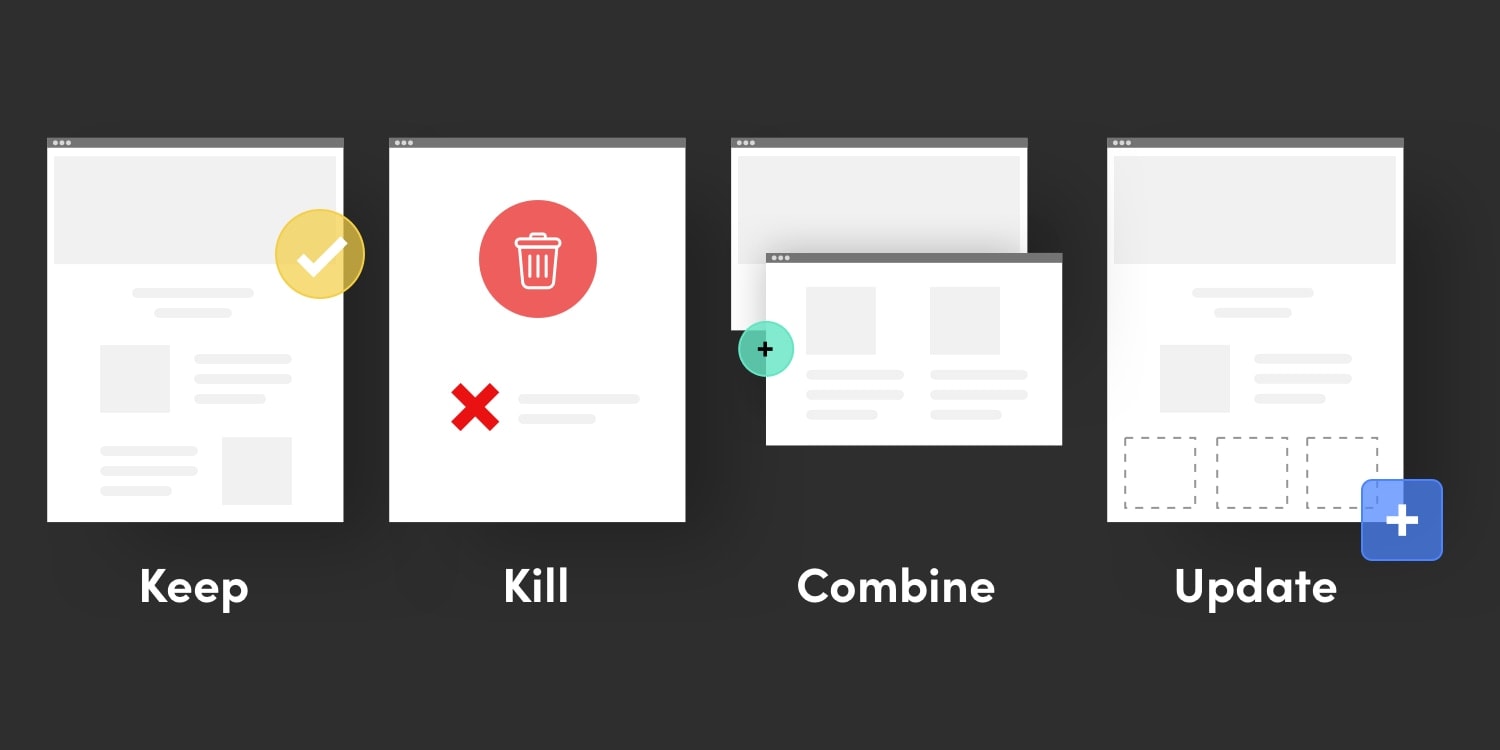
If a page ranks high for a term you care about, that doesn’t mean you need to keep it as is in perpetuity. In fact, if you do that you’ll be violating Step 5: Keep your content fresh, and you’ll very likely see the page’s ranking and traffic decrease over time.
Instead, reverse-engineer why it’s ranking. Keep the page content most likely to be contributing to its position on the SERP, and update the rest of the content. For example, you might have a webpage that has a featured snippet on Google, but a lot of the content on the page is out-of-date. That’s great. Keep the featured snippet and re-write the rest with your keywords in mind.
3. Nail your fintech website schema.
While search engines are getting better and better at matching searchers to the content they’re looking for, they still aren’t human. They rely on algorithms and data to “guess” whether a webpage matches a searcher’s intent. One of the ways they do this is by analyzing your on-page content. Another way is by scanning your website’s schema markup.
Let’s back up a step. What is website schema exactly?
Schema markup is a structured data vocabulary that makes it easier for Google and other search engines to understand the information on your website and serve rich results and snippets to searchers. For a more in-depth overview of schema markup, check out this article on SEMRush.
As a fintech marketer, the most important thing you need to know is that Schema.org has sections dedicated to markup for banks and financial websites and markup for financial products.
By utilizing an industry standard schema markup, you increase your chances of getting a rich snippet on Google. According to Search Engine Journal, rich snippets have an average click-through-rate (CTR) of 58%, compared to 41% for regular snippets. Some types of rich results generate a CTR as high as 87%.
For fintech specifically, the majority of featured snippets are simply going to be answer boxes. For these, you’ll see a few types of results. Some will be text based, while others will be text and an image. The trick to dominating these results is to optimize your page and the image from all angles. Google will actually take an image from one site and the text from another if the algorithm determines this is the best answer for the user. So for this, you’ll need article schema.
This tells Google what the page is about, but it also includes the image data. This is the important part of optimizing for the rich snippet.
We also recommend adding breadcrumb schema as this more clearly shows Google the page hierarchy, helping the algorithm understand the page better. It shows up in the result itself — presenting the user with a much more user-friendly result.
Here’s an example of a rich snippet from one of our clients, ACI Worldwide:
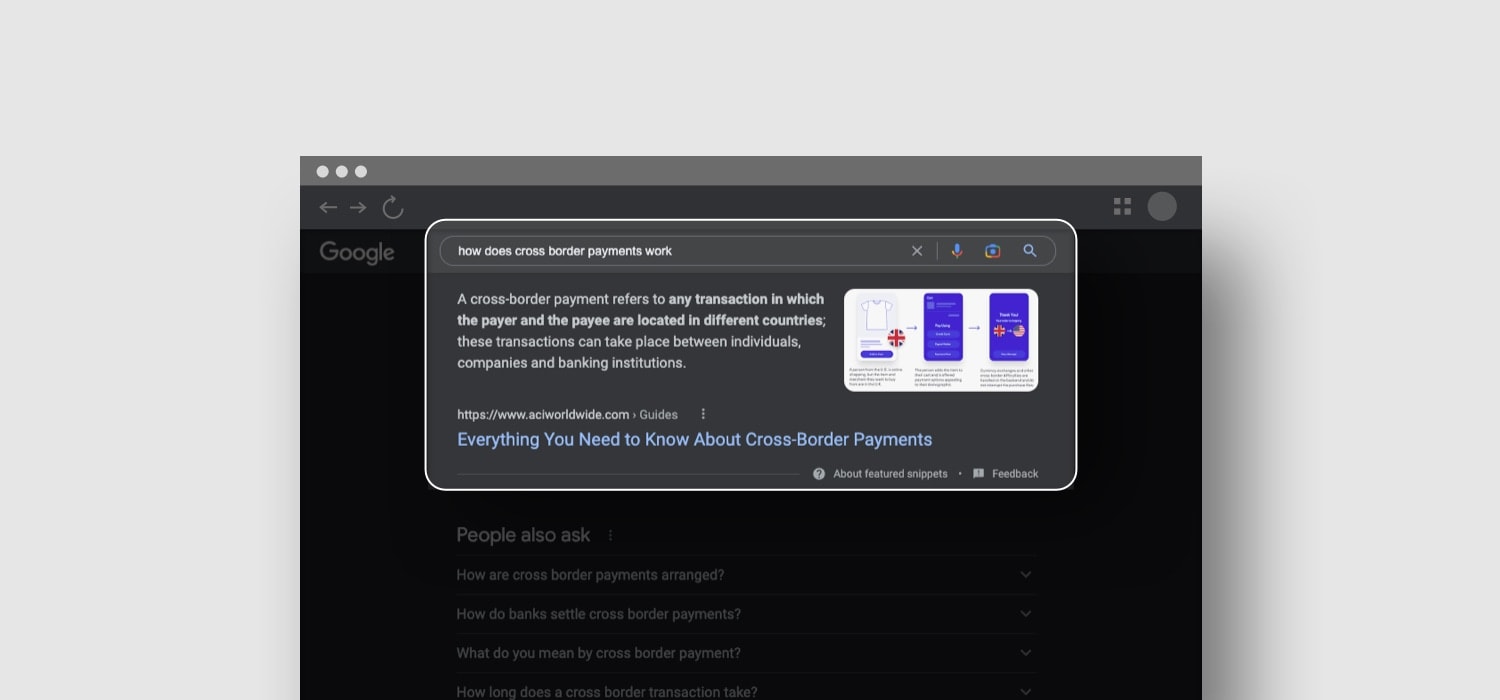
4. Make your website clear and transparent.
This one is pretty simple, but easy to overlook — and if you miss the mark, your SEO will suffer. Because your fintech site needs to meet both YMYL standards and adhere to government regulations, there is certain information that must be easily available on your website.
- Terms & conditions
- Privacy policy
- About us information
- Location and contact information
- Other necessary information depending on the specifics of your business.
Everything should be transparent and accessible. At minimum, include links to necessary information in the footer of your website.
5. Find valuable, relevant keywords your competitors are missing.
Keyword difficulty is a measure of — you guessed it! — how difficult it is to rank for a given keyword or phrase. It can be discouraging to do keyword research for fintech, only to find that Google’s difficulty score is through the roof for many of the high-traffic terms.
Does this mean your efforts to establish your fintech brand on the SERP are in vain? It does not. It just means you need to get creative with your keyword research. Here are some tips:
Use your tools. SEMRUsh has a great keyword planner. We also like AnswerThePublic and Keywords Everywhere (a browser extension for Chrome or Firefox) for uncovering long-tail keywords. Which brings us to…
Target both short- and long-tail keywords. Short-tail keywords refer to search terms that include 1-3 words and cover a broad topic. The screenshot below is an example of a short-tail keyword (“Payment Platforms”). These generally have greater search volume and higher difficulty scores.
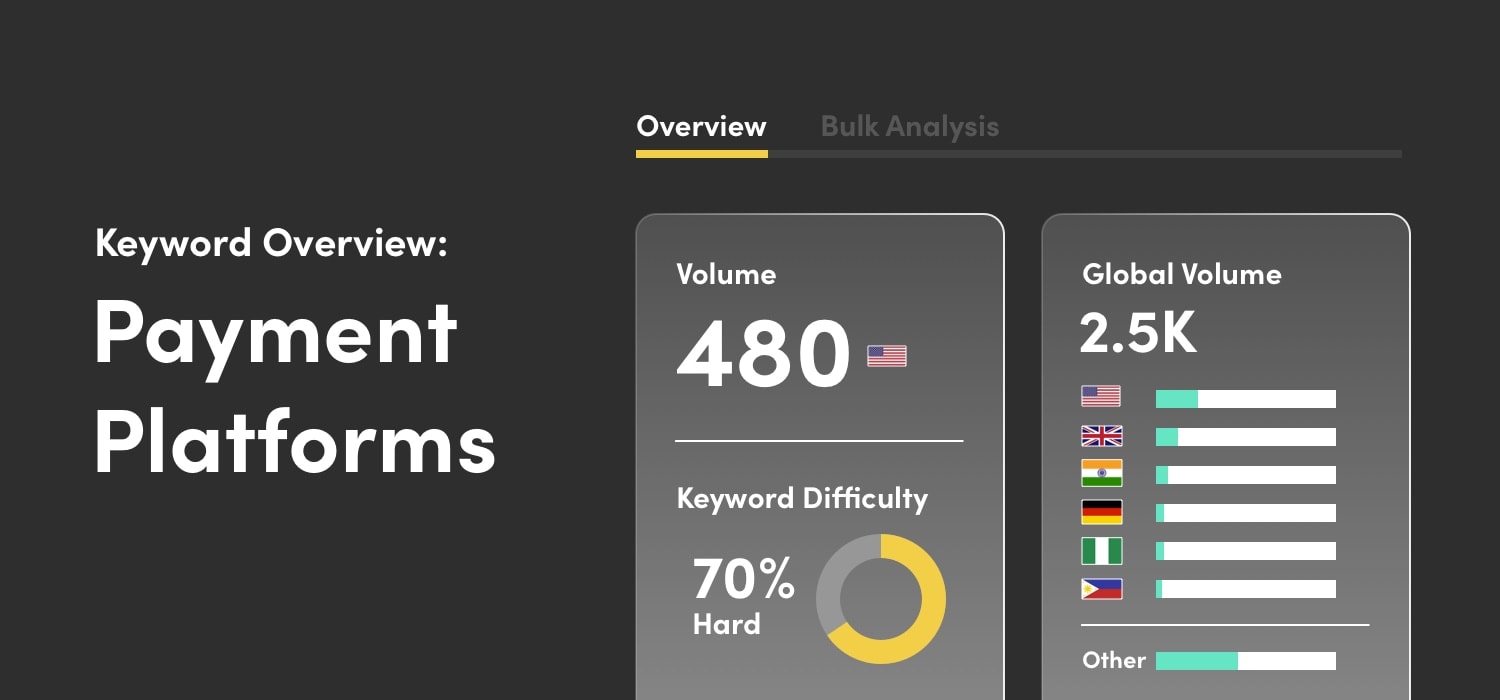
Long-tail keywords are the opposite. They contain over 3 words and are focused on a narrower topic. Search volumes are lower, and it’s generally easier to rank for them. You want a healthy mix of both types of keywords in your content marketing plan.
Protip: To find more long-tail keywords, spy on your competitors. For example, for the search term above (Payment Platforms), SEMRush gives you a list of the top-ranking pages. In this case, NerdWallet has the top-ranking page.
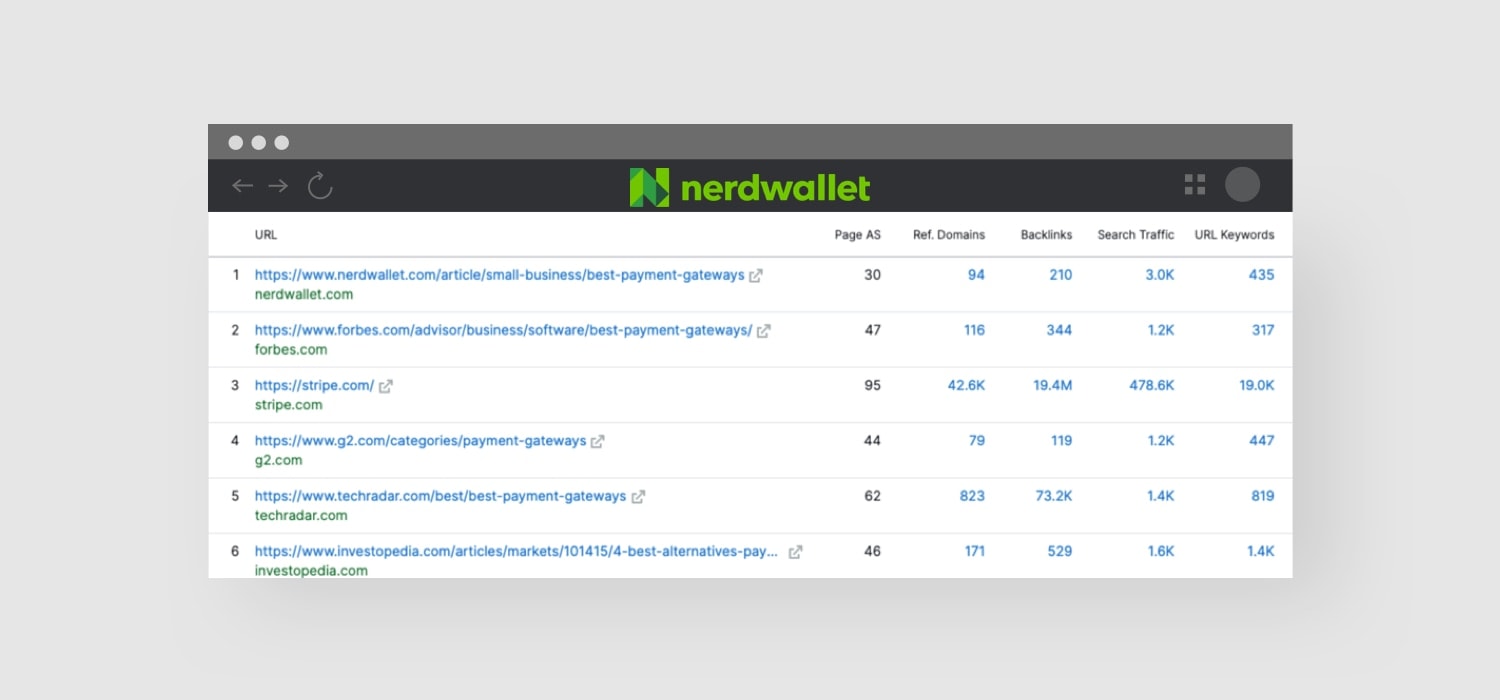
You may not be able to outrank NerdWallet for the short-tail Payment Platforms term. But, you can use a tool like SpyFu to see all the keywords the NewWallet article ranks for. Here’s what’s at the top:
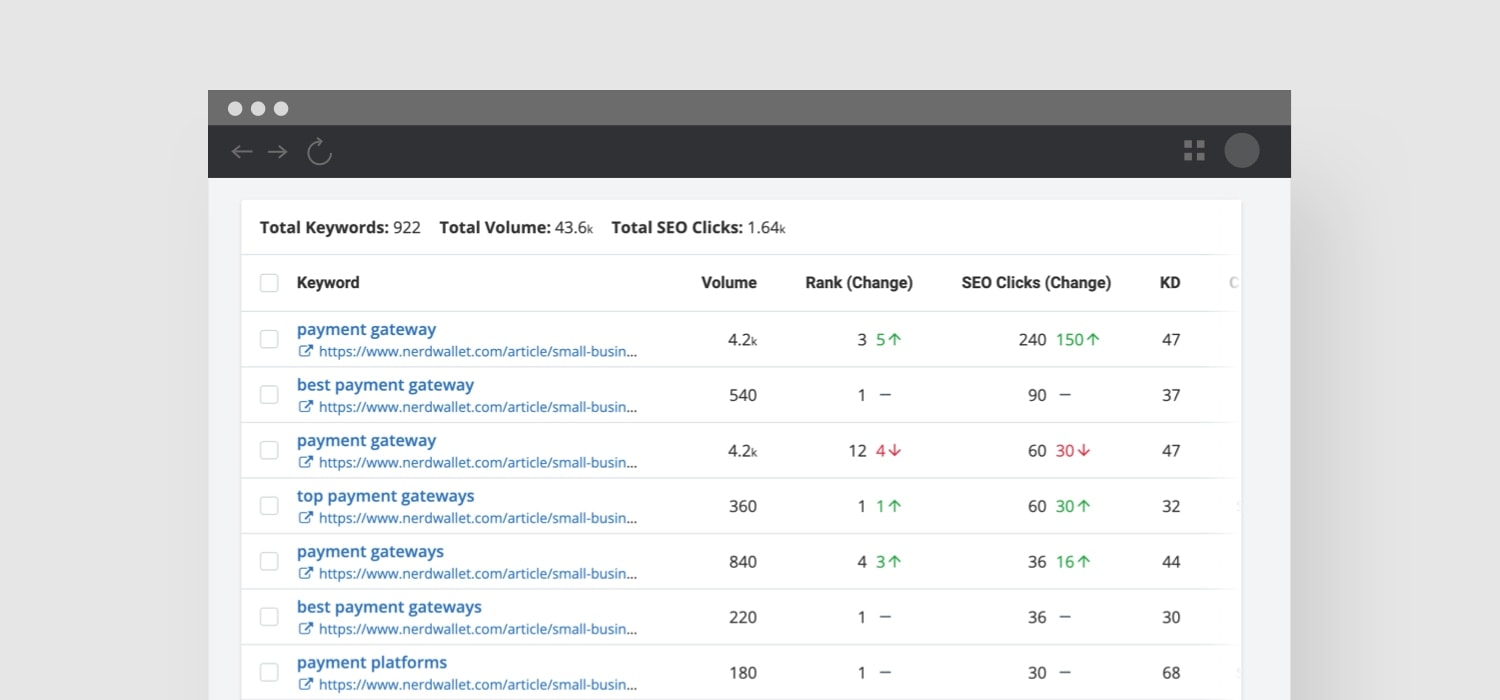
All pretty high-volume terms that will be difficult to rank for. But if you sort by volume, you can find a sweet spot of long-tail keywords that might be worth going after:
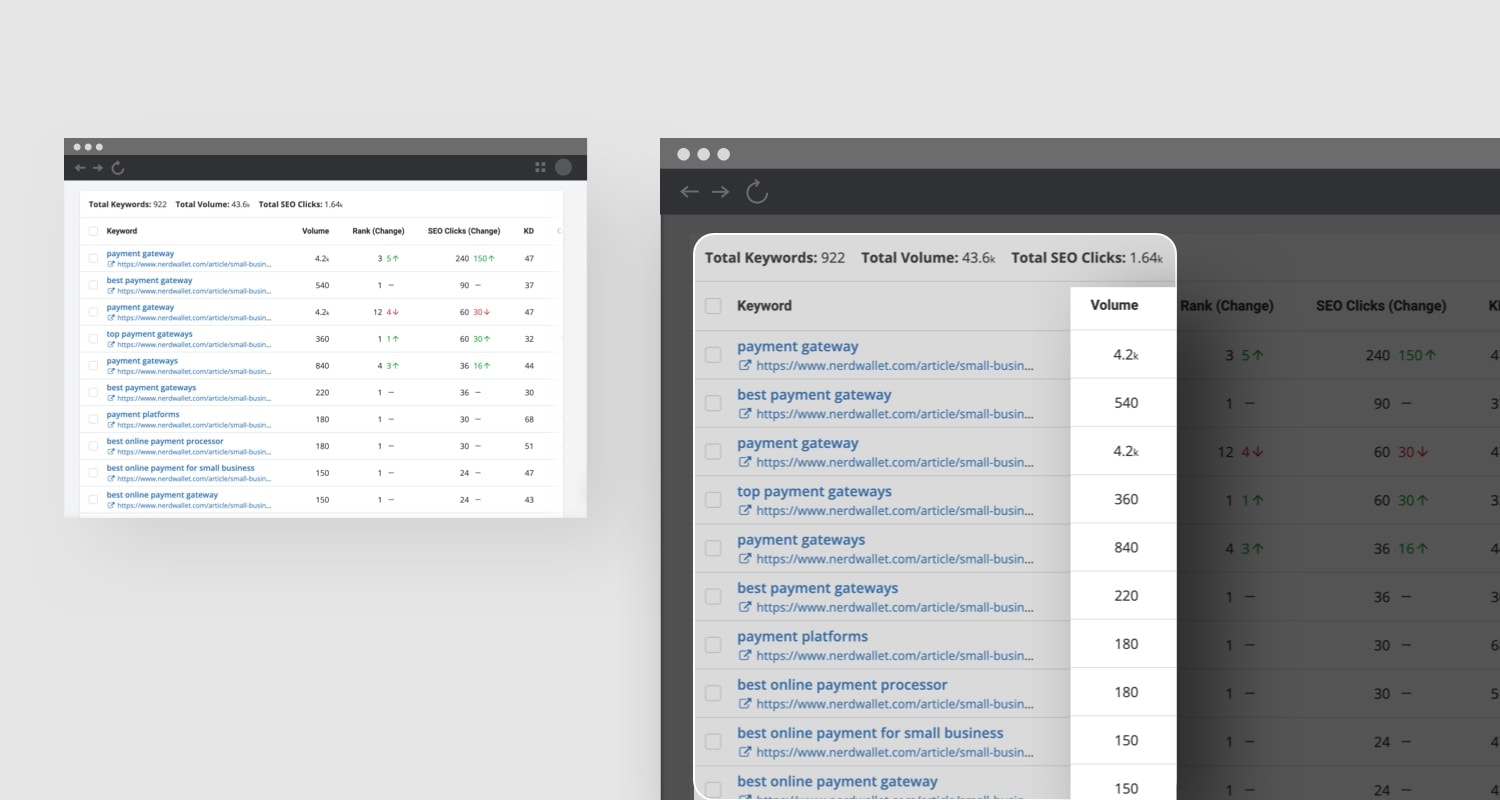
When deciding which short- and long-tail keywords to target, focus on searcher intent. Most keyword planning tools will tell you the general searcher intent, which is based on what content people are most likely to click when searching for a term.
In the screenshot below, you’ll see that SEMRush thinks someone who types “payment platforms” into a search engine is looking to make a purchase, but is not yet ready to buy. They’re searching for information to guide a buying decision. That’s called Commercial Intent.
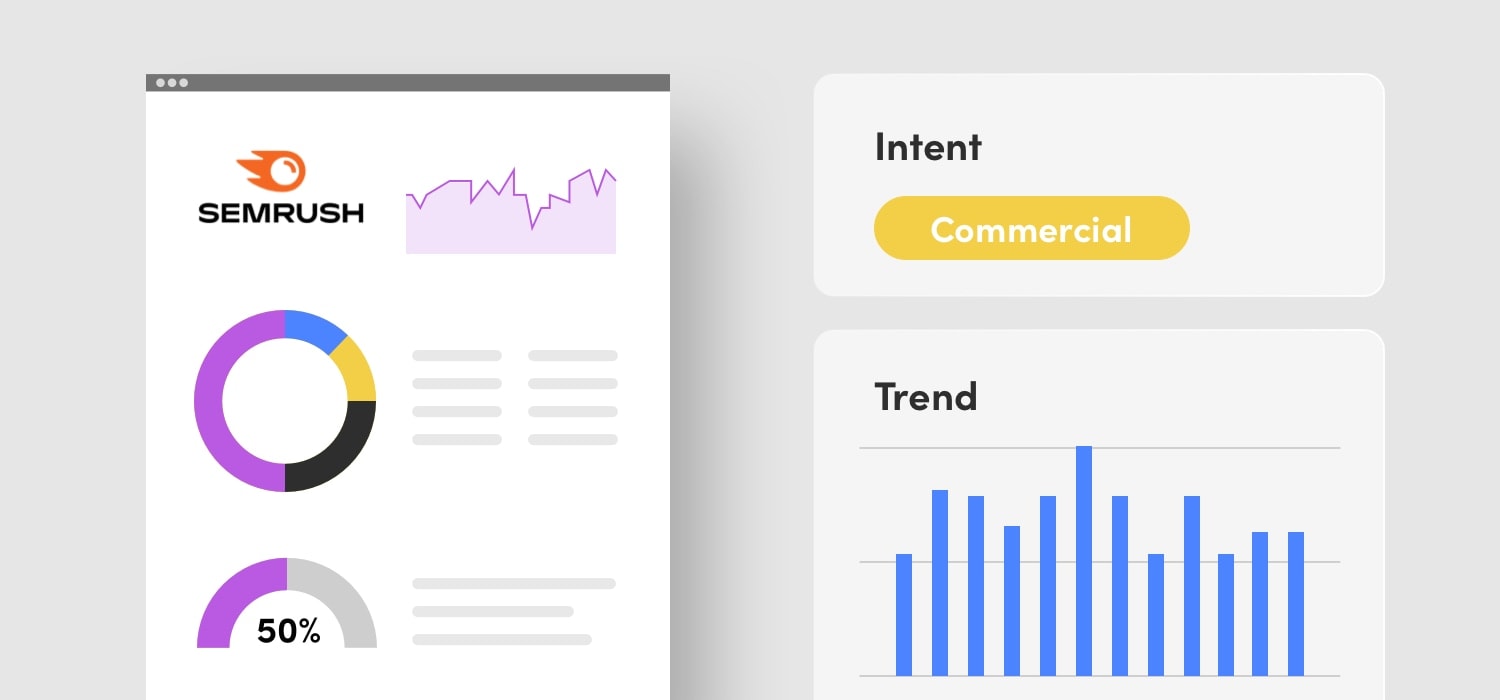
The other broad intent categories you might see are:
- Informational intent: Just what it sounds like, these searchers are looking for information on a given topic. To decide whether it’s worth trying to rank for keywords with informational intent, you have to think a bit deeper about your specific audience and your buyers’ journey. As a litmus test, ask yourself this question: If my fintech brand publishes informational content about this topic, will it help fill my funnel? If it’s a top-of-funnel (TOFU) topic, you’ll need to balance the keyword’s difficulty score with the likelihood that you’ll be able to guide people further down the funnel with related content.
- Navigational intent: These searchers are trying to find a specific website. For example, someone typing in “ACI Payment Processing” is likely looking for ACI Worldwide’s website. At a minimum, you want to make sure your website ranks at the top of the SERP for what we call “branded keywords” — keywords that contain your brand name or versions of your brand name.
- Transactional intent. These are the searchers who are ready to buy now. They generally already know what they want to purchase and type it into the search engine. Below, you’ll see that when you search for “handheld payment device,” Google assumes you want to go directly to a product page to purchase a device, so they serve shopping ads first.
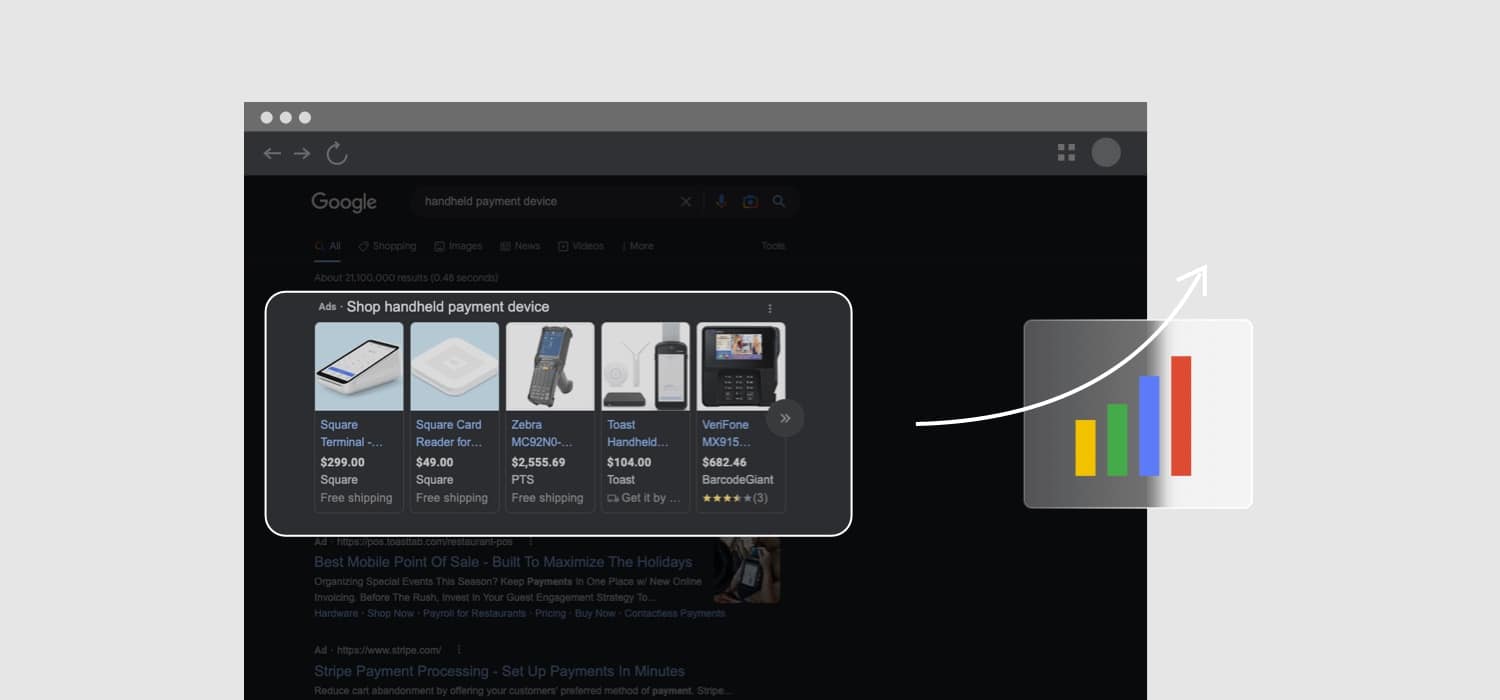
Most fintech purchases don’t happen like this, of course. But to capture searchers with a transactional intent, make sure to have separate service or product pages for all your offerings, each optimized for the specific features people might be searching for.
These categories of searcher intent are a great place to start. But when you’re doing your keyword research, you should also use a healthy dose of good old-fashioned common sense to determine whether people searching for a given term are likely to consider purchasing from you at some point in their buying journey.
6. Keep your content fresh.
You may have heard that SEO is a long game. Even if you do everything right, it simply takes time for things to gain momentum. In addition to patience, SEO takes a lot of discipline. It is definitely not “set it and forget it.”
It’s common for even popular, high-ranking content to lose SEO juice over time. To keep this from happening, it’s important to update your content regularly.
Below is an example of a Vital blog post. As you can see, organic traffic started to spike somewhere between 3-4 months after we published it. Then it started to decline after another few months. We let things ride for a bit. (We were probably too busy with client work.) Then we updated the post in March 2022. Traffic climbed again, spiking in September. Then it went on the down swing, so it was time for another refresh!
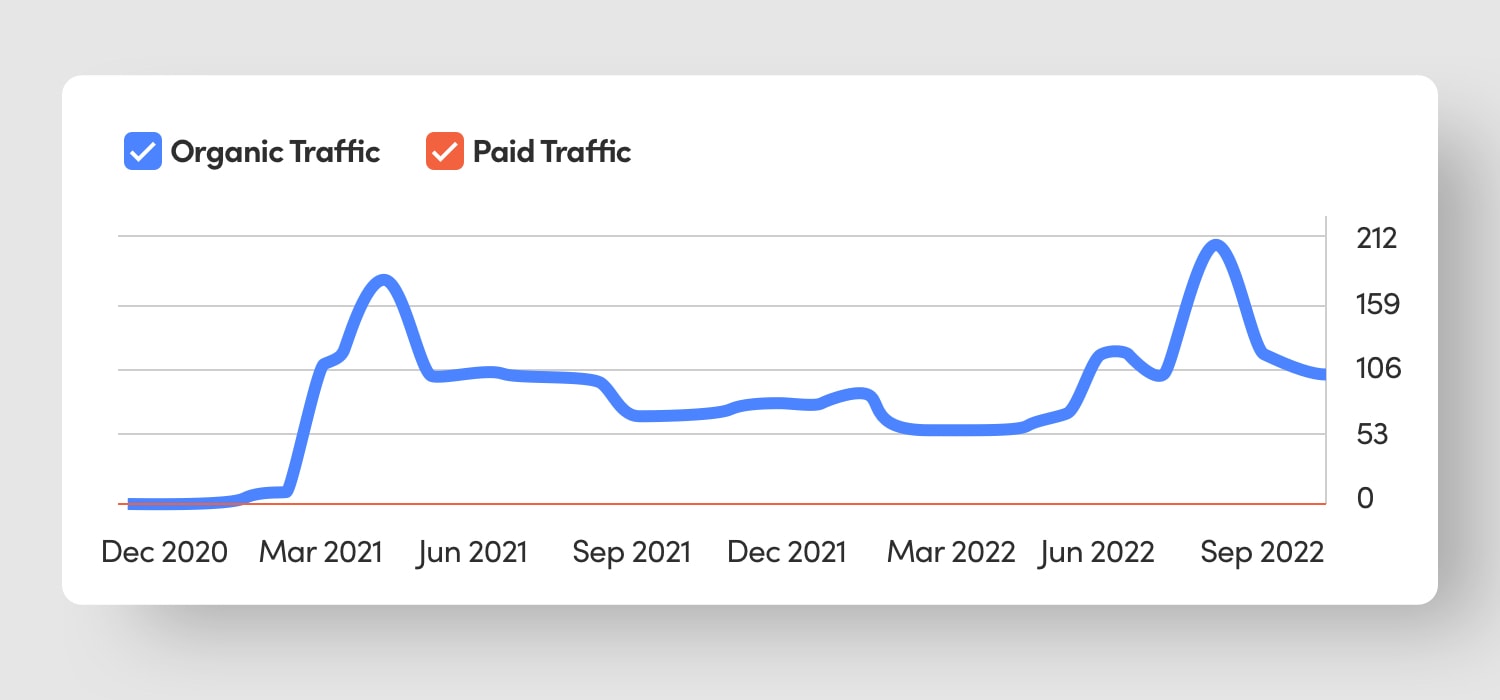
One word of caution about updating content. To avoid starting from scratch with your rankings, don’t throw everything out. Keep the same URL, and analyze the content to see what it continues to rank for and why. Keep any content that’s still relevant.
In addition to regularly updating your webpages and blog posts, you should have a content calendar that dictates your publishing cadence. How often you need new content depends on your goals and your capacity. If you find you can’t keep up, an agency that understands both SEO and content marketing for fintech can help you feed the machine. A content marketing team with fintech expertise is a must. They’ll know how to efficiently produce content that meets E-A-T and YMYL standards for your specific industry — and they’ll also have a head start understanding your business and your audience.
7. Establish authorial credibility.
Whether you’re producing content in house or with a fintech content marketing agency partner, credible authorship is a huge factor in boosting your content’s E-A-T.
It’s important to note that Google doesn’t actually give your content an E-A-T score. That would make things too easy. Instead they take a number of E-A-T-related factors into account to determine how to rank your content.
Even though E-A-T is a bit of a black box, there are metrics that give you some insight into how Google might look at your content. One of those metrics is called your “Page Authority Score.” Page Authority was created by Moz as a way to quantify the authority of your website or specific webpage. Google doesn’t take Page Authority into account, but generally speaking, your Page Authority is a decent indicator of how you’re doing with E-A-T.
Page Authority ranges from zero to 100. Here you can see that the New York Times homepage has an Authority Sore of 88. That’s super high. An average Authority Score is 40-50. Anything above that is good, and scores of 60+ are considered excellent.
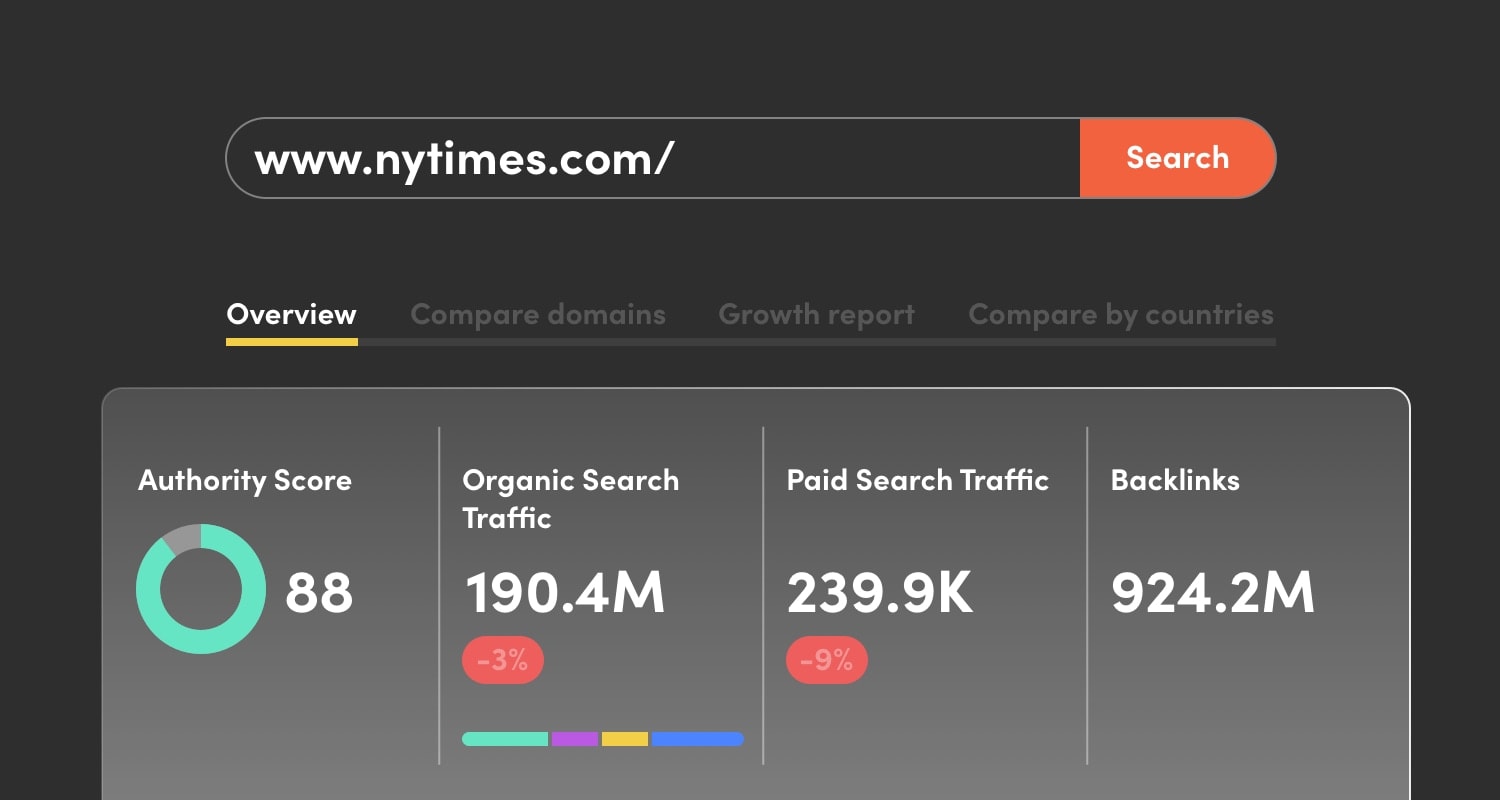
So, how do you improve your content’s Authority Score? One way is by establishing an authoritative author for every piece of content you publish. All blog posts and other pieces of content should include an author byline with a bio and ideally a photo. Your Authority Score will be higher if:
- The author regularly publishes useful, credible content about the subject matter.
- The author publishes content on other websites with high Authority Scores.
- The author is mentioned by highly authoritative sites.
8. Build links from authoritative sources.
Speaking of authority, when ranking E-A-T and YMYL content, Google doesn’t just take the author into account. It also looks at the specific page and your website as a whole. One of the ways it determines how a page or site ranks is by how many other webpages link back to it.
But not just any links will do. To have ranking value, links need to come from sites Google already considers authoritative and trustworthy. They should also be contextually relevant — meaning the link text itself should contain relevant keywords.
For example, this following link is less valuable, because the linked words don’t give any context:
For more information on digital marketing for fintech, click here.
A more valuable link would be something like this:
Get more information about digital marketing for fintech.
One great way to build links to your content is by guest blogging. This means giving away useful content to be published on an authoritative website in exchange for a link back to your site. A good digital marketing agency will be able to help you launch and maintain a successful link building program.
Caution: While “good” links help your SEO rankings, “bad” links can actively harm your online visibility. What’s a bad link? Anything on a link farm, a spam site, or anywhere else that isn’t a genuine source of credible content that’s valuable to searchers.
Want Help Improving Your Fintech Website’s SEO?
The first step in any SEO strategy is a thorough audit of where you stand now. At Vital, our team of SEO experts takes stock of a variety of often-overlooked metrics to determine your site’s SEO health — and, more importantly, we immediately address a range of common issues. This often leads to an immediate boost to your rankings, even before the real, long-term work begins.
If you’re interested in an SEO audit, or you just want to talk through any challenges you’ve been having with your strategy, contact us. One of our fintech SEO experts will get back to you shortly to start the conversation.
